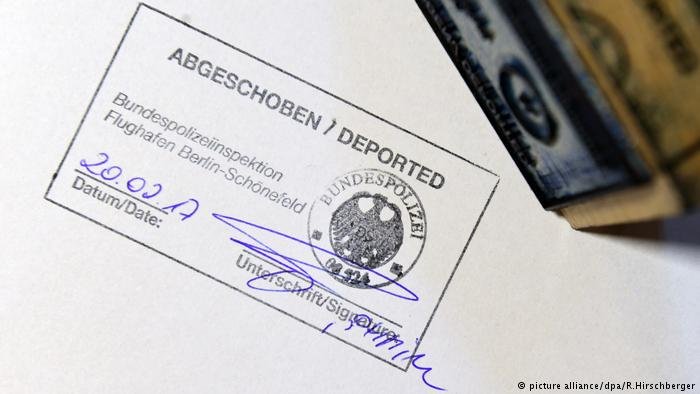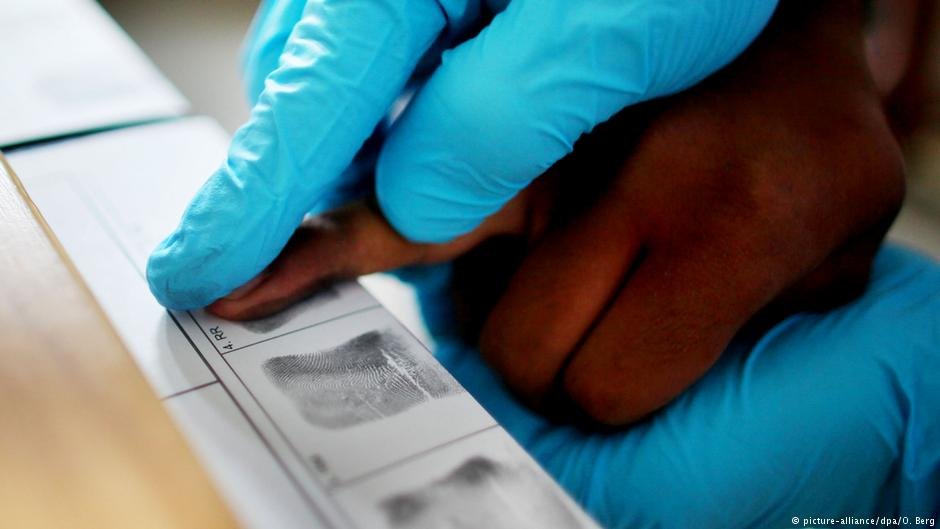The EU is getting ready to launch a new, digitalized immigration system at its external borders called EES. This is part of an overall reform of how entrance and exit into the bloc is managed. Some people like asylum seekers, however, might be at a disadvantage with the new system.
Anyone whose passport is not from an EU country nor from Switzerland, Norway, Lichtenstein and Iceland will soon have to share their biometric information as part of the new entry/exit system (EES) -- regardless of what kind of entrance visa they might hold.
This includes facial recognition and fingerprints, which will be stored in databases for three years.
Most travelers will eventually be able to share much of this information in advance using an app, and self-service kiosks will be set up at most airports to facilitate a smooth travel experience; EES will be free of charge on any of these platforms.
People with residency cards in the EU, however, will not be required to register for the new system, as their personal data is already stored on the cards.
Passport stamps will become a thing of the past as part of the new system; only Ireland and Cyprus will continue to process every person manually.
The EES system will be introduced at airports, ports and applicable train stations, though in some instances kiosks and checks will be carried out before entrance to the EU.
For example, Eurostar trains departing from London to Paris, Brussels or Amsterdam will have these formalities sorted at check-in, meaning that upon arrival, there will be no additional entrance checks.
Read AlsoDigital borders: EU increases use of technology to monitor migration
A digital border management system 10 years in the making
Initially, the rolling out of the EES might result in delays if there are operational issues, though in the long run, the new system is designed to actually speed up procedures at EU borders.
For the time being, travelers into the EU are therefore advised that there might be some delays at the EU's external borders.
The implementation of the new procedures has been delayed multiple times before, though it is expected that the EES will be fully operational across the EU (except for Cyprus and Ireland) by 10 April 2026; it has been part of successive EU directives dating back to 2016.
The EU hopes that the system can eventually be tied into the use of e-gates, which are currently only available for citizens and residents of the EU.
The new system will not be used as part internal border crossings within the bloc, though individual member states reserve the right to check travel documentation and other papers at their borders at their own discretion.
Read AlsoPoland's border checks: Beginning of the end of Schengen?
Fighting crime and illegal activities at the EU's external borders
The EES is not only intended to change the way people enter and exit the bloc but is also designed to help prevent irregular migration and combat security threats.
The data collected by the system "will allow identities to be verified securely, preventing false documents or incorrect matches," a press statement says.
The modernized system will closely monitor whether people who are traveling to the bloc are sticking to the maximum time they are allowed to be there.
Even travelers who do not require visas -- such as visitors from the UK or the US -- will have to register with the system to make sure they do not overstay their allowance of 90 days within any 180-day period.
Meanwhile, those who have a travel ban — for example, for overstaying previous visas or engaging in illegal activities -- will be identified much more easily and sent back.
Read AlsoIrregular migrants, asylum applicants to the EU to routinely be screened for security checks
Unique consequences for asylum seekers
The new system will also have consequences for migrants and asylum seekers, as EES is designed to make clandestine journeys and the use of falsified documents more difficult.
People wishing to come to an EU country to seek asylum -- whether it is by plane or boat -- will have to share their biometric data and personal information before they clear immigration.
Any irregularities caught at this stage might result in a delay in asylum requests being processed -- both initially at the port-of-entry but also in the long run, as questions during their asylum process about irregularities in their journeys might come back to them.

The personal data collected at these entrance points might also be used against individuals, for example to identify people during immigration-related raids, or to identify people who might have lodged a prior asylum claim in another EU nation.
This means that if the EES system detects such cases, those people are prone to be deported to the EU country they first had entered as per the stipulations of the so-called Dublin Regulation.
Databases upon databases
EES meanwhile is also expected to help in faithfully establishing people's identities as part of the Common European Asylum System (CEAS), which the European Union wants to strengthen as part of its New Pact on Migration and Asylum (to be fully implemented next year).
It is not clear how much of all this personal and biometric data can -- and will -- exactly be cross-referenced across countries and agencies within the EU; after all, there are 24 official languages across all EU countries and some databases can therefore be difficult to link up with others.
Read AlsoThe new EU Asylum and Migration Pact -- questions answered

However, major endeavors such as eu-LISA (the European Union Agency for the Operational Management of Large-Scale IT Systems in the Area of Freedom, Security and Justice) and in particular Eurodac (the European Asylum Dactyloscopy Database), are already well underway to consolidate and unify various databases containing pieces of personal information across the bloc, chiefly as a measure to fight illegal activities ranging from drug smuggling to terrorism to irregular migration.
Some critics have said that this increasing trend of streamlining and cross-referencing personal information across various databases is turning tools like Eurodac into an "immigration database" which could infringe on fundamental rights, including the preservation of human dignity.
Read AlsoAmnesty: Digital tech in migration management risks violating human rights
After EES comes ETIAS
The roll-out of EES also serves as a precursor to yet another EU travel system which should become operational in late 2026 - the European Travel Information and Authorisation System (ETIAS).
Citizens of non-Schengen countries will need to apply for an ETIAS authorization in advance, providing personal information and details about their journey, so their entrance can be cleared before they embark on their journeys.
This authorization will be valid for three years or until the date when a passport expires — whichever comes first.
ETIAS will cost 20 euros per person once it is rolled out.
Read AlsoFingerprinting: How are asylum seekers registered in the EU?
